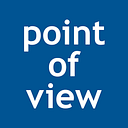Lorraine Marchand, Panelist at HLTH Boston 2021
Meeting the interoperability mandate, managing consent
Most see the promise and potential for healthcare data analytics to help address issues around quality, cost and access. But given the exponential growth of healthcare data — which is expected to have a compound annual growth rate (CAGR) of 36% through 2025 — organizations can quickly become overwhelmed on how to deliver real-world success with real-world data.
The first, most important step in driving value from data and analytics is to clearly define: What problem are we trying to solve? This fundamental definition of the use case will guide better strategies for using real-world data and help organizations determine what they need to be successful.
Once that definition is in place, organizations can evaluate all of the other aspects of using real-world data successfully. For example, they can better decide about what types of data they need, the level of quality of the data, how quickly data is accessible, and how well data sources are linked to one another. Of course, there are operational considerations, too, such as constructing a scalable data infrastructure, as well as managing data governance, privacy and consent management.
There is a lot to consider, but perhaps the best way to illustrate the steps is to share how a couple of our clients have successfully used real-world data in the real world.
Satisfying regulatory requirements with external control arms
One of our clients, a small biomedical device company, had a product with a broader indication in the rest of the world than it had in the United States. It wanted to expand the US-labeled indication and align regulatory status globally. Because use outside of the US had clearly established efficacy and safety for this indication, the company did not want to conduct a randomized controlled trial.
Fortunately for these situations, with the passage of the 21st Century Cures Act, the U.S. Food and Drug Administration (FDA) expanded the use of real-world data in the regulatory approval process. IBM Watson Health researchers created an external control arm from a patient registry using MarketScan Commercial Claims and Medicare Supplemental Database.
The client submitted the first medical device submission to the FDA using an external control arm in late 2020. While official approval is still pending in this case, the appropriate use of external control arm studies has the potential to save significant time and money for life sciences companies.
Meeting the interoperability mandate, managing consent
Interoperability in healthcare, the seamless and secure sharing of health data, has long been a goal for the industry. Regulatory requirements aim to hasten the industry’s progress toward true interoperability.
HealthPartners, a national healthcare provider and payer organization, is managing an increasingly large and diverse amount of data. They recently selected IBM Watson Health to help it meet the recent U.S. interoperability mandate and go beyond the mandate to help deliver better experiences for patients and members. Moving to a FHIR server, modernizing data ingestion and leveraging advanced analytics will enable this organization a secure, efficient health data exchange. This capability will help provide an interlocking, comprehensive view of information from providers, which can help personalize care.
Vision for what’s next
For too long, disparate data has led to fragmented care and incomplete information. Many organizations are still seeking that holistic, representative and insightful view of all of this data, including claims, clinical, imaging, labs, genomics and wearables. We believe that this vision for an intelligent health record will be the future of healthcare and life sciences. Because it’s not data, but rather the patient who is at the center of every meaningful healthcare endeavor.
